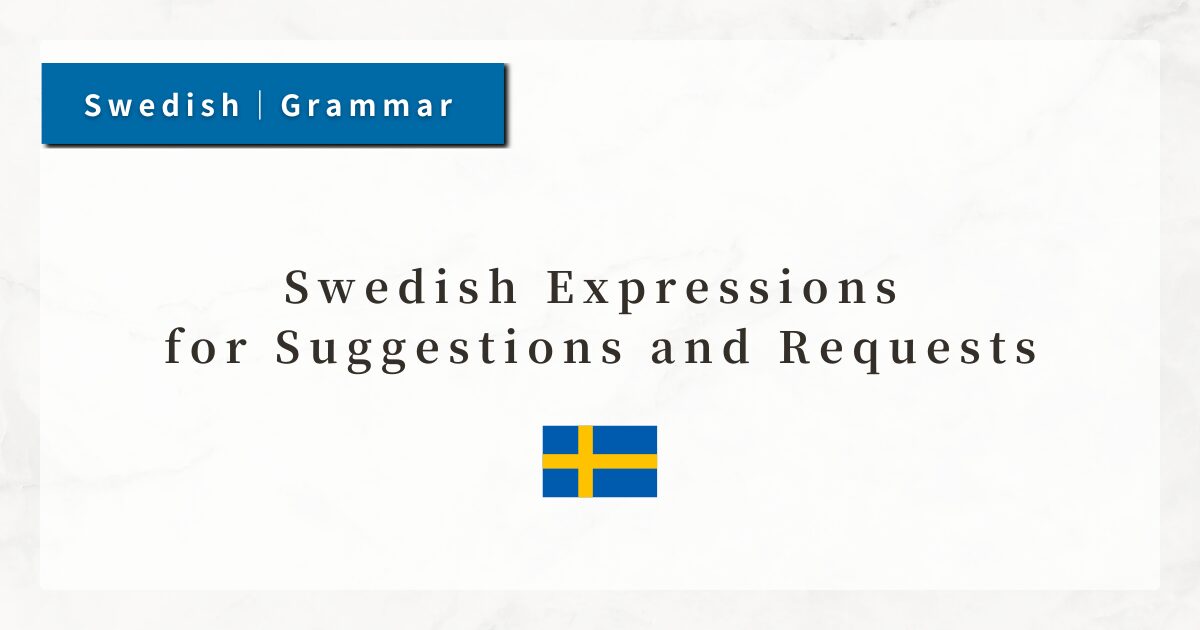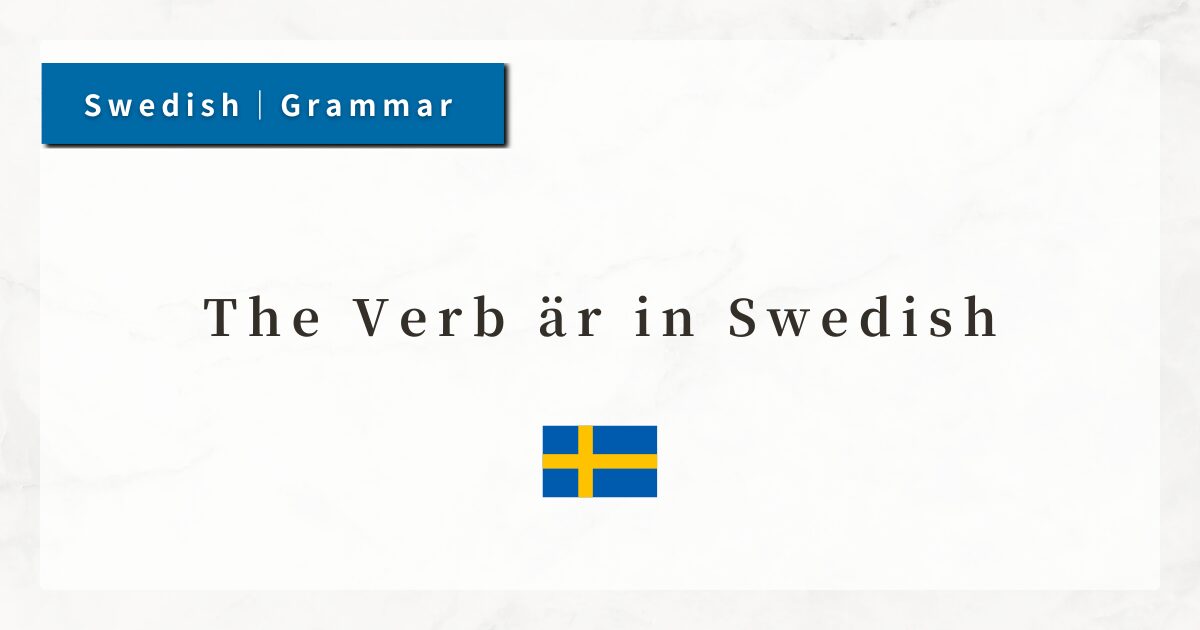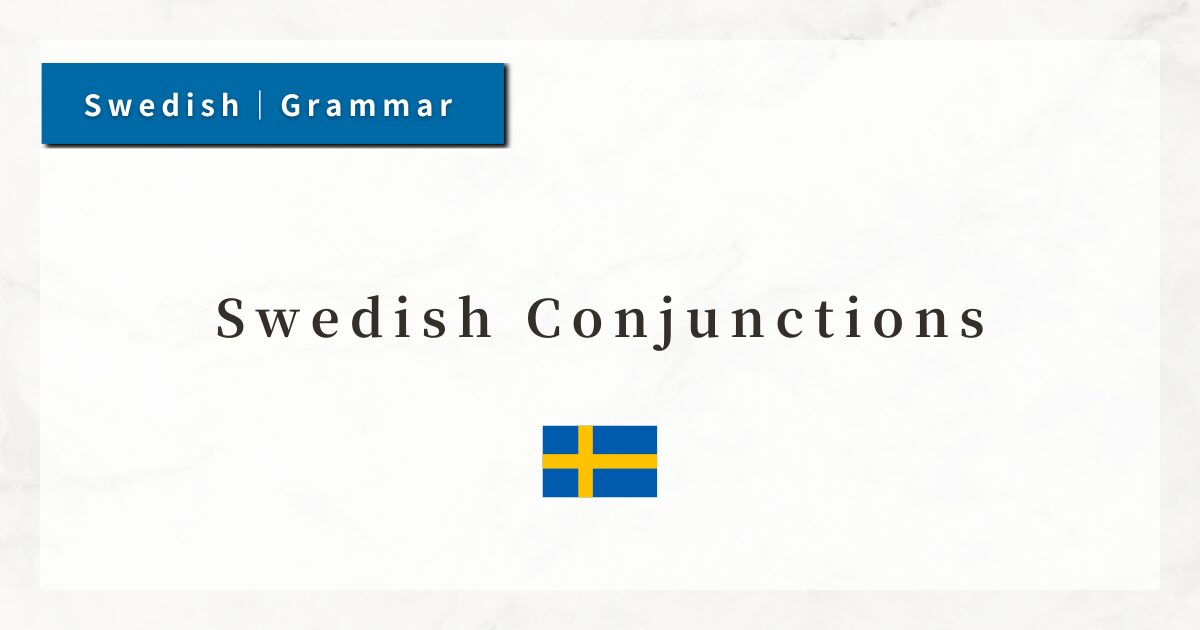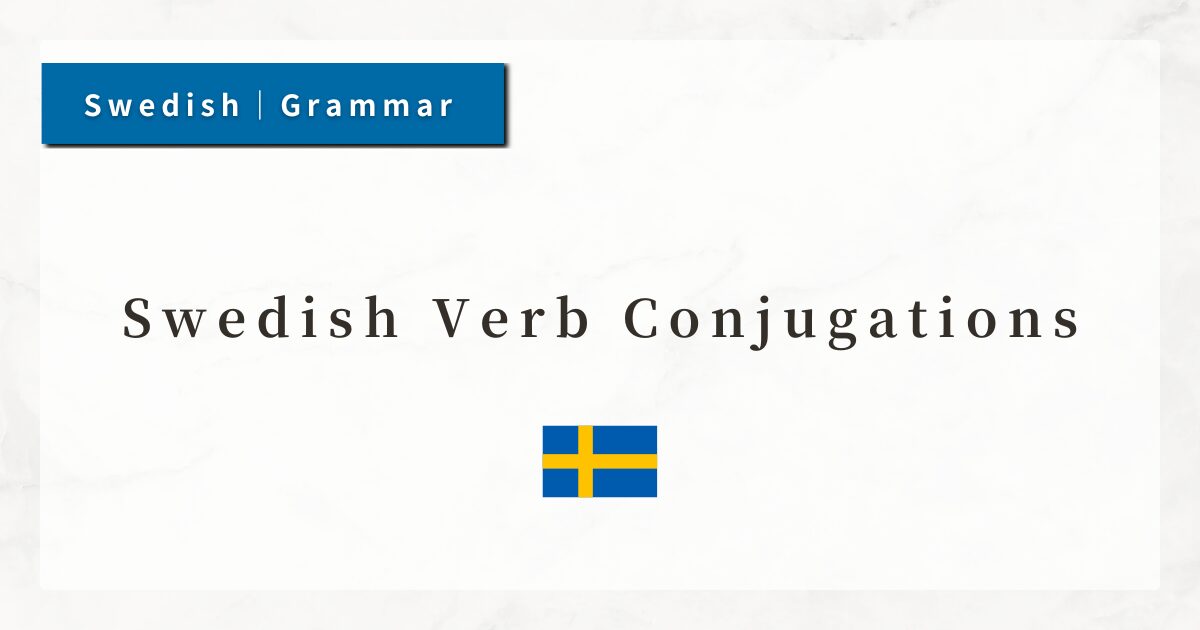#60 Swedish Expressions for Suggestions and Requests|Useful Everyday Phrases

In Swedish, expressions for making suggestions such as “Shall we… ?” or for making polite requests like “Could you… ?” are frequently used.
In everyday conversation, it is important to avoid sounding too direct, instead using softer and more polite wording.
In this lesson, I will explain the basic sentence patterns and provide examples of how to make suggestions and requests in Swedish.
1. Basic Patterns for Suggestions
The verbs ska (shall) and skulle (should/would) are commonly used when making suggestions in Swedish.
1-1. Direct Suggestion with ska
The pattern “ska vi + infinitive” means “let’s …” and is used when simply inviting someone to do something together.
- Ska vi gå på bio?
(Shall we go to the cinema?)
This structure assumes that both the speaker and the listener will take part in the action. It is often used in conversations with friends or family.
1-2. Polite Suggestion with skulle
The pattern “skulle vi + infinitive” is more polite and indirect than “ska vi ….”
- Skulle vi kunna träffas imorgon?
(How about meeting tomorrow?)
Since skulle is the past form of ska, using it softens the tone, giving the nuance of “Wouldn’t it be nice if we… ?”.
Compared to “ska vi …,” this form is more polite and can be used in business situations or with someone you are meeting for the first time.
2. Basic Patterns for Requests
For making requests, Swedish often uses kan (can) or the more polite skulle kunna (could you).
2-1. Request with kan
The pattern “kan du + infinitive” means “Can you … ?” and is used in casual situations.
- Kan du hjälpa mig?
(Can you help me?)
This is often used with friends or family, and is one of the basic everyday expressions.
2-2. Polite Request with skulle kunna
To make a request more polite, use “skulle du kunna + infinitive.”
- Skulle du kunna öppna fönstret?
(Could you open the window, please?)
This phrasing carries the nuance of “If it is possible, could you… ?” and shows consideration for the other person. It is appropriate in more formal contexts.
3. Commonly Used Expressions
Here is a summary of useful fixed expressions for making suggestions and requests. Since these expressions appear frequently in conversation, it is useful to memorize them as set phrases.
| Expression | Translation | Usage/Nuance |
|---|---|---|
| Ska vi + verb | Shall we … ? | Direct suggestion |
| Skulle vi + verb | Would you like to … ? | Polite, softer suggestion |
| Kan du + verb | Can you … ? | Casual request |
| Skulle du kunna + verb | Could you … ? | Polite request |
| Vad sägs om att + verb | How about … ? | Proposing an idea |
| Vill du + verb | Do you want to … ? | Asking about someone’s preference |
4. How to Soften the Tone
In Swedish, the use of past tense forms can make expressions sound softer and more polite. This is especially useful in requests and suggestions.
- Ville du ha lite kaffe?
(Would you like some coffee?)
Compared to the present tense “Vill du ha … ?” (Do you want … ?), the past tense “Ville du … ?” feels less direct and more polite.
Other examples include:
- Tänkte du följa med oss?
(Were you thinking of coming with us?)
Here, the use of tänkte (was thinking) expresses the suggestion in a more indirect and considerate way.
In this way, Swedish avoids directness, and using softer expressions helps conversations flow more smoothly.
5. Summary
- Suggestions can be made with “ska vi … ?”(direct) or “skulle vi … ?”(more polite).
- Requests can be expressed with “kan du … ?”(casual) or “skulle du kunna … ?”(polite).
- Phrases like “vad sägs om … ?” and “vill du … ?” are also very common.
- Using the past tense can soften the tone, making both suggestions and requests sound more polite.




